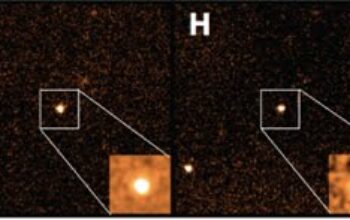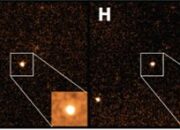Quantum computational processes offer an intriguing vista into the confluence of physics, computer science, and information theory. As we delve into the multifaceted realm of quantum computation, we must first grasp the foundational principles underlying this avant-garde technology. At its core, quantum computation operates on the principles of quantum mechanics, distinguishing itself from classical computation through its utilization of quantum bits, or qubits.
To comprehend what it truly means to be a quantum computational process, it is essential to delineate the distinguishing characteristics of qubits. Unlike classical bits, which assume a binary state of either 0 or 1, qubits can exist simultaneously in superpositions of states. This phenomenon enables quantum processors to perform multiple calculations concurrently, exponentially enhancing computational capabilities. Such superpositional states exhibit amplitudes that represent the probability of a qubit collapsing into a particular classical state upon measurement, underpinning the probabilistic nature intrinsic to quantum mechanics.
Furthermore, entanglement is another quintessential feature of quantum computation. When qubits become entangled, the state of one qubit is intrinsically linked to the state of another, regardless of spatial separation. This non-local property permits a level of interdependence that classical systems fail to replicate, allowing quantum computers to solve problems that would be intractable for classical counterparts. Consequently, entangled qubits facilitate complex operations that amplify the processing power through parallelism.
There exist diverse quantum computational models, each characterized by unique aspects, implementations, and potential applications. These models include quantum gate models, adiabatic quantum computing, and topological quantum computing, among others. The quantum gate model is arguably the most prevalent, where operations are conducted via quantum gates—analogous to classical logic gates—transforming qubits through operations defined by unitary matrices. This model serves as the operational backbone for many popular quantum programming languages, such as Qiskit and Cirq.
On the other hand, adiabatic quantum computing harnesses the principles of quantum annealing to solve optimization problems. By utilizing the adiabatic theorem, this technique transforms a simple quantum state into a complex one, allowing the system to evolve toward the ground state of an energy landscape that encodes the solution to the problem at hand. Devices like D-Wave systems epitomize this model, showcasing the potential for real-world optimization scenarios, from logistics to financial modeling.
Topological quantum computing, emerging from the realms of condensed matter physics, provides novel avenues for addressing error-correction challenges that are prevalent in quantum computation. Unlike other systems reliant on qubits, topological qubits are envisioned to possess inherent immunity to local disturbances. This robustness stems from their non-local characteristics, which encode quantum information through the global properties of the system. Such innovations promise more stable quantum systems that could transcend current limitations.
The experience of a quantum computational process is laden with both opportunities and limitations. The realm is not devoid of challenges; coherence times and error rates are detrimental factors that hinder practicality. Coherence refers to the preservation of quantum states over time, a trait that diminishes due to interactions with the environment—a phenomenon known as decoherence. Consequently, quantum systems are vulnerable to noise and operational errors, necessitating the development of sophisticated error correction and fault-tolerance strategies.
Furthermore, the intricacies of quantum algorithms catalyze a paradigm shift in computational theory. Notable algorithms, such as Shor’s algorithm for integer factorization and Grover’s algorithm for search optimization, illustrate the transformative potential of quantum computation. Shor’s algorithm, for instance, poses a formidable challenge to classical cryptography, showcasing exponential speed-ups over classical factoring methods, thereby raising critical questions about data security in the technological landscape.
Transitioning from theoretical frameworks to practical applications, the sphere of quantum computation is expanding rapidly across several domains. In pharmaceuticals, quantum computers hold great promise for simulating molecular interactions and accelerating drug discovery. In financial markets, they may offer insights into complex risk models and algorithmic trading strategies. Moreover, advancements in connectivity and communication could usher in a new age of quantum encryption techniques, providing ultra-secure data transmission that transcends current capabilities.
Nevertheless, the journey of integrating quantum computational processes into mainstream technology is fraught with impediments. The exigence for specialized knowledge and expertise in quantum mechanics remains a formidable barrier. Additionally, significant advances in quantum hardware, including scalable qubit architectures and reliable techniques for mitigating errors, are imperative for practical realization. Investment in research, interdisciplinary collaborations, and educational initiatives will prove vital for unlocking the vast potential that quantum computation harbors.
In conclusion, the essence of being a quantum computational process encapsulates a synthesis of mathematical finesse and physical phenomena—a realm where nature’s idiosyncrasies illuminate new pathways for computation. As we stand on the precipice of this quantum revolution, the anticipation of future advancements is palpable. Quantum computation invites exploration into unchartered territories where information theory, cryptography, and complex systems harmonize, heralding a new epoch in computational paradigms. It is within this interdisciplinary nexus that we may uncover the profound implications that quantum processes hold for the fabric of society in the twenty-first century.










